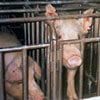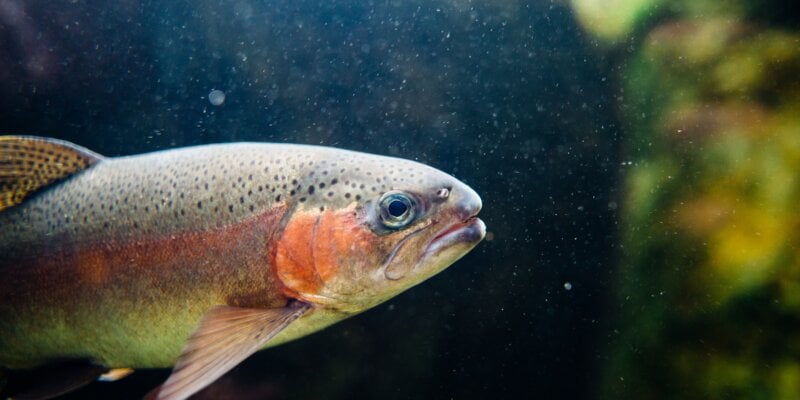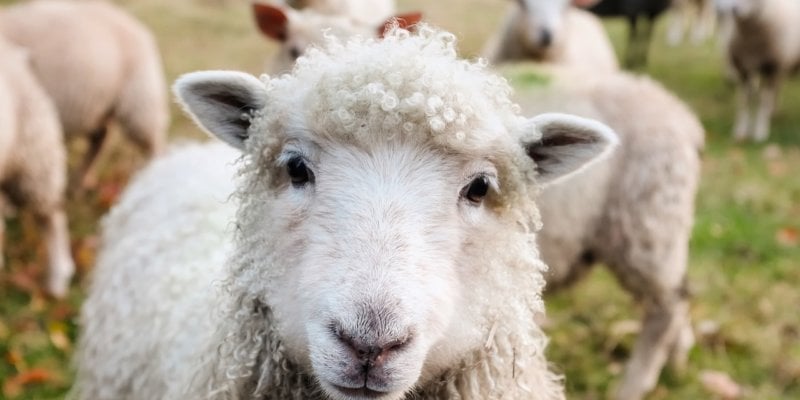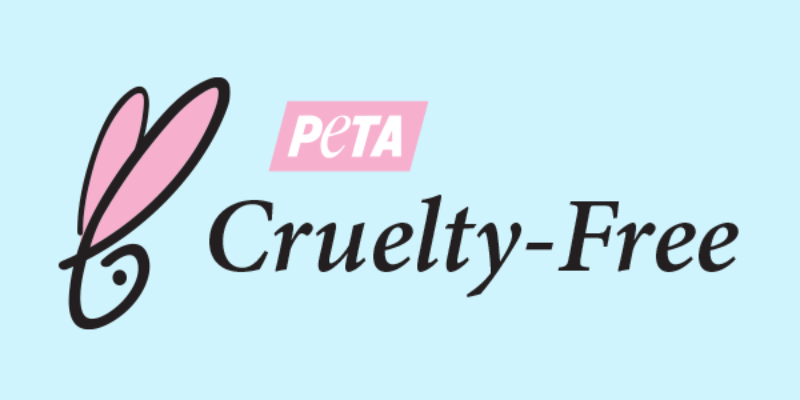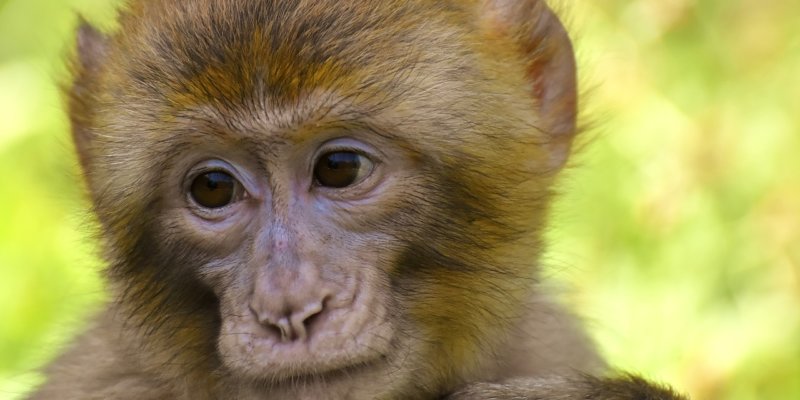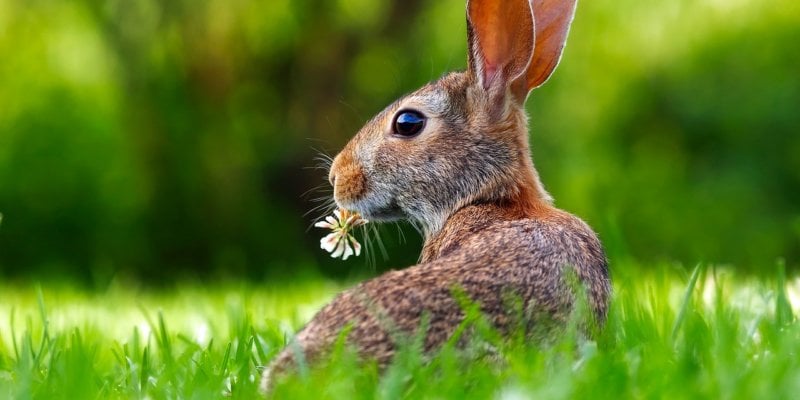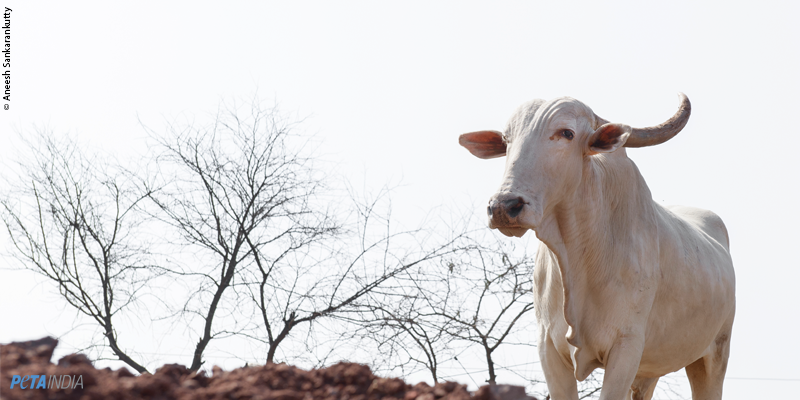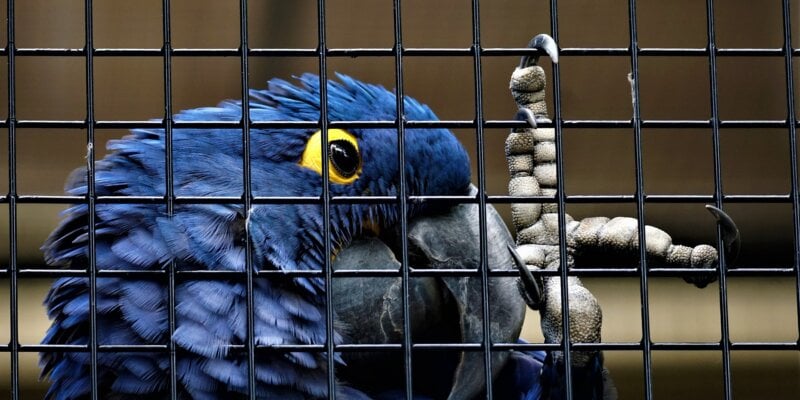Angora, Cashmere, and Other Types of Wool
It doesn’t matter whether a tag says “wool”, “mohair”, “cashmere”, “pashmina”, or “shahtoosh” – the production of any type of wool harms animals and even kills them.
Angora
Angora wool comes from angora rabbits who have extremely soft, thick coats. PETA Asia’s exposé of angora rabbit farms in China – where 90% of the world’s angora wool is produced – revealed that abuse is the norm. Rabbits, who are highly social animals, are isolated in urine-encrusted wire cages that are so small, they can barely move. They have very delicate footpads, so they often develop excruciatingly painful foot ulcers when they’re forced to spend all their time on wire cage floors. Every three months, for two to five years, workers strap terrified angora rabbits to boards or hang them from the ceiling in order to rip their hair out as they scream in pain.
Female rabbits produce more wool than males do, so on larger farms, males who aren’t destined to be breeders are killed at birth. Workers on Chinese angora fur farms hit rabbits on the head with the back of a knife, hung them upside down, slit their throat, and skinned them. Some of them were still kicking and twitching as workers tore the skin off their bodies.
Cashmere
https://www.youtube.com/watch?v=6qfEfp48ys
Cashmere comes from cashmere goats, whose coats keep them warm during freezing winters. However, to meet market demand, workers shear the animals during winter, causing many to die from exposure to extreme cold. Any young goats who have perceived defects in their coats are killed.
A PETA Asia investigation of cashmere farms and slaughterhouses in China and Mongolia – which produce 90% of the world’s cashmere – revealed that workers violently hold goats down and tear their hair out with sharp metal combs as they scream in pain. Goats on cashmere farms don’t receive pain relief or veterinary care for the wounds workers inflict on them, and one worker poured rice wine into an animal’s wound. When goats are deemed unprofitable, they’re killed for their flesh. Workers hit them in the head with hammers in an attempt to stun them or drag them by one leg into the slaughterhouse to slit their throat in front of other animals. Goats were left to bleed to death on the filthy floor, and some were still moving a full two minutes later.
There are no penalties for abusing animals on cashmere farms in China, and the situation appears to be the same in Mongolia. The cashmere industry is also environmentally destructive and is a significant contributor to soil degradation and desertification. In fact, 65% of Mongolia’s grasslands are degraded, and 90% of the country is in danger of desertification.
Pashmina is a type of cashmere that comes from Tibetan mountain goats who are exploited and eventually killed for their fleece.
Mohair
Angora goats reared by the mohair industry fare no better. PETA Asia’s investigation of the mohair industry in South Africa – the world’s top mohair producer – documented that workers mutilated goats’ ears with pliers, threw animals into tanks of poisonous chemicals to remove faeces from their hair before shearing, and dragged and lifted goats by their horns, tails, and legs. Since shearers are paid by volume instead of by the hour, they work quickly and roughly, often cutting off entire swaths of skin, and they stitch cuts closed without using any pain relief.
Many goats die after their natural insulation and protection from the cold is removed from their bodies. One farmer admitted that over one weekend, 40,000 goats died of exposure across South Africa, and another said that up to 80% of goats die after shearing on some farms.
After five or six years of this abuse, the mohair industry sends goats to the slaughterhouse, where they’re electrically shocked, hung upside down, and slashed across the throat. One worker was seen slowly cutting the throats of fully conscious goats with a dull knife, breaking their necks, and hacking off one animal’s head.
Shahtoosh
Shahtoosh is made from the coats of endangered chirus (aka “Tibetan antelopes”). Chirus can’t be domesticated, so humans kill them to obtain their wool. It has been illegal to sell or possess shahtoosh products since 1976, but humans still slay thousands of chirus every year to make and sell shawls on the black market.
Save Animals – Don’t Wear Them
Leave goats’, rabbits’, and antelopes’ hair where it belongs: on the animals! Check out PETA India’s list of companies with the “PETA-Approved Vegan” logo to make sure that no living beings are harmed for what you buy and wear.













